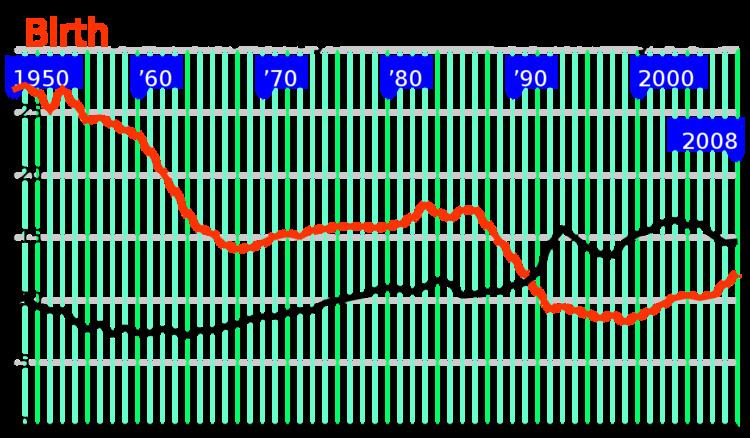 | ||
The Russian Cross is the name of a demographic trend that occurred in Russia. Starting in 1988, birth rates among native Russians (as well as most other ethnic groups of the European part of the former Soviet Union) were declining, while from 1991 the death rates started climbing.
In 1992, the number of deaths exceeded the number of births, and continued to do more or less so ever since until 2013. When this trend is plotted on a line graph starting from the mid-1980s, the lines cross at 1992, hence the name.
Contributing factors
Scientists have tried to connect the causative link between the two trends through the catastrophic growth of alcohol consumption that took place in Russia since the end of the Soviet Union, and the subsequent deregulation of the Russia alcohol market.
It has been demonstrated that this is connected with the fact that post-Soviet Russia experiences one of the world's highest prevalence of alcohol-related problems, which contributes to high mortality rates in this region. Reduction in alcohol-related problems in Russia could have strong effects on mortality decline. Andrey Korotayev and Daria Khaltourina have analyzed the plausibility of application of general principles of alcohol policy to the Russian Federation.
They have shown that alcohol policy approaches could be implemented in the same ways as they have been in other countries. In addition, according to Korotayev, there should be special attention to decreasing distilled spirits consumption, illegal alcohol production, nonbeverage alcohol consumption, and enforcement of current governmental regulations.
Other factors explaining the Russian Cross include:
The Russian Cross is not confined to Russia, as it has also happened in other countries, most commonly with the fall of the Soviet Union (as in Russia): Belarus, Bulgaria, Estonia, Latvia, Lithuania, Romania, Serbia, and Ukraine. Also, Germany fell into a negative natural increase in the 1970s, and Hungary in the 1980s. (Source: the Wikipedia articles for each country's demographics include vital statistics from which crosses may be ascertained.)
